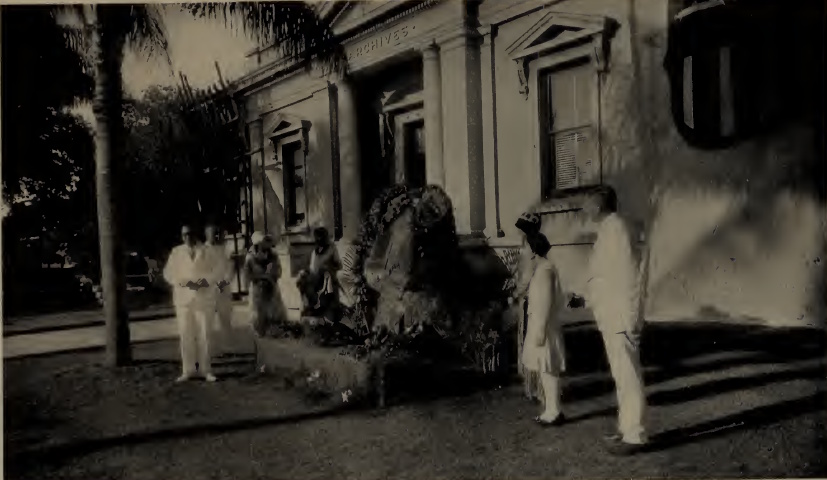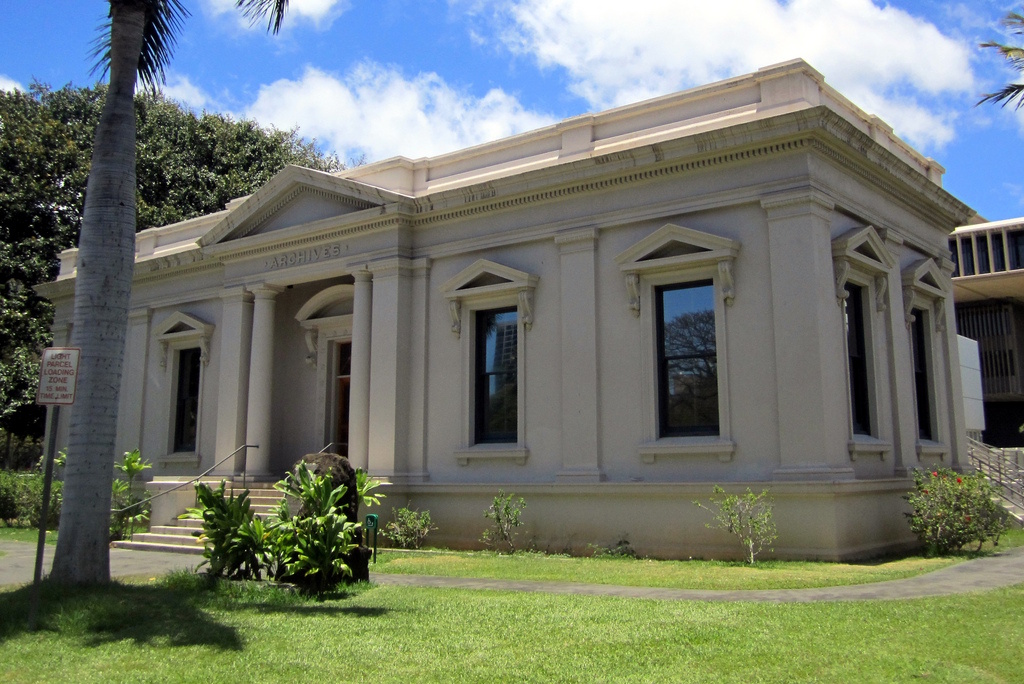A small number of women banded together as a King’s Daughters’ Circle for the purpose of learning more how to care for others, taking the motto, ‘Not to be ministered unto, but to minister.’
At the time, Honolulu had no haven for friendless and lonely old persons who were aging. Then, the distress of two such old ladies inspired the King’s Daughters with the determination to meet this need.
The aim was to comfort and care for those in need, just as one would care for a relative or friend. “No efforts are spared in removing all trace of the institution from this home, where each person is given a pleasant, private room in which to spend declining years among little, treasured possessions.” (Honolulu Star-bulletin, April 9, 1914)
On July 15, 1910, they rented and furnished a house in Makiki and called it the King’s Daughters’ Home.
The aim of the Circle was first “to furnish a genuine home to all those in need because of age or weakness, and second, to furnish a Christian home for persons in middle life or past who receive but a trifle for their labor and are unable to pay the usual boarding-house rates”.
“(L)astly, (the goal was) to furnish for convalescents released from the care of hospital and physician, without a home or means and unable to work for a while, a place where they may go and have loving care for a few weeks and someone to help nurse them back to strength. (Honolulu Times, December 1, 1910)
“Viewed from a progressive standpoint, it may be said that there is scarcely a county in the United States which has not its home for old people without means. Honolulu has its Lunalilo Home for aged Hawaiians.”
“There are homes for the people of other races and hospitals for the white plague sufferers and those afflicted with other ills, but nowhere in this city of wealth is there a place where an aged Anglo-Saxon, whose younger days have been spent in faithful service, can enter and say, ‘This is my home.’” (Thrum)
The first home “installed these two dear old ladies with a matron to care for them. Later more women and some men were joined to the little family, the house was enlarged to meet the increasing demands for more accommodations”.
“(A)ssistants were engaged, and the work grew steadily, until now several small cottages have been added to the establishment, Yet, with these added facilities, the Old Folks’ Homes is taxed to capacity”. (Honolulu Star-bulletin, April 9, 1914)
“(T)here are scores of working women, very worthy women, Christian women, employed on meager salaries, by the week or by the day or the month, and that can afford to pay a small part only for room and meals. It is really hard, very hard, for them to make that little income meet the demands of food and raiment (clothing.”)
“Often they are constrained to live in the most frugal manner as to lodging and table board. But, if there can be a Home, plain, sweet, neat, with a good nourishing menu, three times a day, what a blessing!” (Honolulu Times, December 1, 1910)
“No sooner was the first home secured and opened with furnishings befitting the needs of those in the afternoon of life who had seen better days, but what its capacity was taxed, and from that time … there have been applicants for admission kept on the waiting list owing to its limited accommodations”.
“Thus from its inception, almost, has the need of enlargement been insistent and has sorely taxed the handful of promoters to meet this want of the community.” (Thrum)
“The King’s Daughters’ Circle has undertaken the work which the community has so far omitted. It has done what it could with limited means, secured from private sources, and now feels justified in asking the aid of the community for a building enterprise … like the magnificent YMCA structure”.
“Confident that their trust in this appeal is not misplaced, the organization of King’s Daughters engaged Mr HL Kerr, an architect who has designed a number of the finest buildings in the city, to draw plans for an Old People’s Home, to be erected on the Kaimuki site which the organization now owns”.
“The building as designed will afford ample and comfortable housing for fifty (occupants,) with additional quarters for nurses and other attaches of the institution. The structure as planned has all the essential provisions for insuring comfort to the (occupants,) and at the same time is artistic in design, supplying an edifice which, from an architectural point of view, will prove a credit to the city and a monument to the progressive spirit of the community.”
“The general idea of the architect has been to give a home effect inside and out, and to provide a building which will insure a maximum of comfort and convenience with a minimum of expenditure for its economical maintenance. The lanais and veranda are as generous in size as they are essential.”
“The dining hall and dining lanai may be operated separately or thrown together as desired, and the rooms which will be for general use are centrally located in order to be of the greatest service to all. … The rooms are large and airy, each provided with a generous clothes press, and there are ample toilet facilities included.”
“The upper floor is designed primarily for the use of the caretakers and assistants, and will also provide room for those among the old people who are able to mount the easy stairway.”
“One feature of the plans to which the attention of contributors is particularly called, is that it may be constructed in five parts or wings grouped about a central building, permitting any one person or group of persons who may so desire to build a wing as a memorial.” (Thrum)
There is a sad side to this story … reported in the Hawaiian Gazette, February 6, 1912. It relates to Mrs Margaret Jerome Healy and her friend Mrs Elisabeth Stevenson; both lived in the King’s Daughters Home.
Unfortunately Healy passed away.
“The old ladies of the home were all anxious to attend the funeral of their late companion, who was a general favorite among them … The superintendent demurred but it was finally decide that a refusal would result in unnecessary grievings and the permission was granted.”
“The aged women gathered about as the body was lowered and reverently bowed their heads as the last words of the service were spoken. Most of them were crying quietly and the moment, always so sadly dramatic, was doubly tense to those who felt the severing of the ties so poignantly.”
“Mrs. Stevenson’s heart, which has been weak, was unable to stand the tension of emotion and dropped quietly, the old lady sinking to the ground amidst her companions and peacefully passing across the borders to join her friend.”
Stevenson (who had been a nurse for the greater part of her life) died “before the open grave as the body of her departed friend was laid to rest.” (Hawaiian Gazette, February 6, 1912)
“They were two woman who shared the bonds of aloha in their last days of their lives on this earth, and they left together to the other side, without one feeling sadness for the other in one dying before the other, and one being left behind in this world grieving.” (Kuokoa, February 9, 1912) The King’s Daughters Home closed in 1978.











































